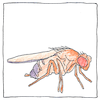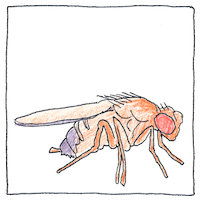Hugo de Vries
evolution

|
Mutationism
Fifty years after Darwin’s theory of natural selection, Hugo de Vries was unsatisfied with it as an agent of evolution. Darwin’s theory was understood as the gradual emphasis of continuous variation. De Vries proposed that evolution was caused by dramatic and persistent mutations.
Damage and repair
De Vries coined the term, mutation. The theory lives, then it dies. Another fifty years go by. Cells have an ability to repair genetic damage, but sometimes the change persists, sometimes it helps. Sometimes it waits for a further mutation to give it a reason. Eventually, the theory either evolves or dies.
Mutation
This coin clinking in the head might characterize how I felt. It was odd that bullies in school never identified the key mutation. It bothered me but I wouldn’t admit it. I was proud of it but only secretly.



De Vries was an experimental biologist specializing in the study of evening primroses. Darwin, in his theory of pangenesis, claimed that each body part produced gemmules that carried its own inheritable characteristics. De Vries also believed that traits are inherited in particles, which he called pangenes (which Wilhelm Johannsen later called genes).
See also in The book of science:
Readings in wikipedia: